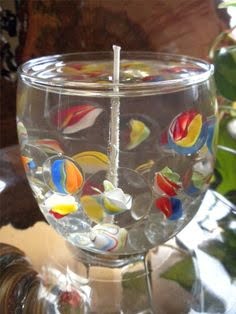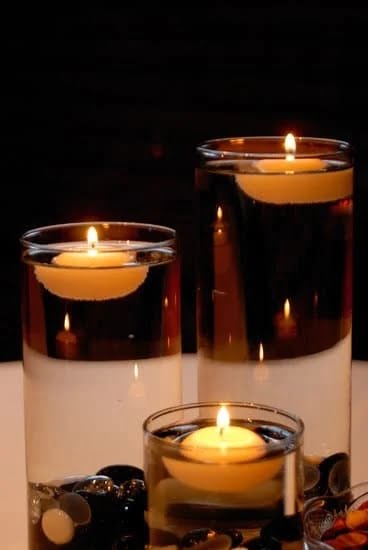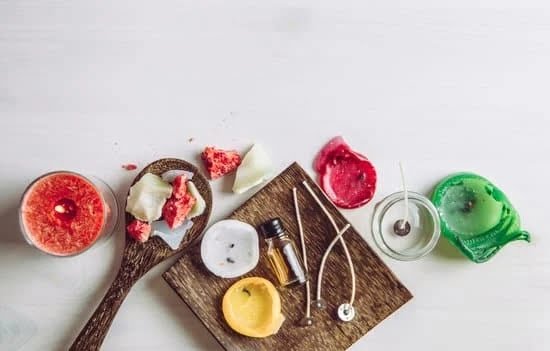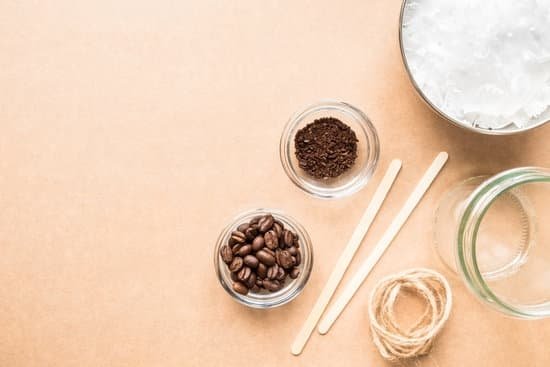When it comes to candle making, essential oils can be a popular choice for adding fragrance. But can you use any essential oils in candle making? Understanding essential oils is crucial to ensure the success of your candle-making project. From the benefits of using essential oils to choosing the right ones and blending them effectively, there are important factors to consider when incorporating essential oils into your candles.
Essential oils are highly concentrated plant extracts that are known for their aromatic properties and various benefits. They are commonly used in aromatherapy, skincare products, and yes, even in candle making. However, not all essential oils are suitable for candle making due to their specific characteristics and properties. It’s important to have a basic understanding of essential oils before using them in your candles.
When it comes to choosing the right essential oils for candle making, there are several factors to consider such as the strength of the scent, the intended use of the candle, and personal preference. Whether you’re looking for a calming aroma or an energizing fragrance, understanding how different essential oils interact with each other can help you create unique blends that enhance your candle-making experience.
The Benefits of Using Essential Oils in Candle Making
Using essential oils in candle making offers a myriad of benefits beyond just creating pleasant scents. Here are some of the advantages:
1. Therapeutic properties: Essential oils can provide therapeutic benefits such as reducing stress, promoting relaxation, and improving mental clarity. When used in candles, these properties can enhance the overall ambiance and promote a sense of well-being.
2. Natural and chemical-free: Unlike synthetic fragrances, essential oils are natural and free from harmful chemicals. This makes them a healthier option for those who are sensitive to artificial scents or prefer to avoid synthetic ingredients.
3. Customization: Essential oils allow for endless possibilities when it comes to creating unique scents for candles. By blending different oils together, you can customize the aroma to suit your preferences or even create signature scents for special occasions.
In addition to these benefits, essential oils also have antimicrobial and antifungal properties that can help purify the air when the candle is burned. Overall, using essential oils in candle making not only adds fragrance but also contributes to a healthier and more enjoyable environment.
Choosing the Right Essential Oils for Candle Making
When it comes to choosing the right essential oils for candle making, there are a few key factors to consider. Firstly, it’s important to select essential oils that are high-quality and pure. This ensures that you’ll achieve the best scent and therapeutic benefits in your candles. Look for essential oils that are labeled as “pure” or “100% pure,” and consider purchasing from reputable suppliers.
Consider the Scent Profile
Another important factor to consider when choosing essential oils for candle making is the scent profile. Some essential oils have strong, bold scents, while others are more subtle and delicate. Think about the overall aroma you want to achieve with your candles, and choose essential oils that complement each other well.
Therapeutic Benefits
In addition to providing a pleasant fragrance, many people enjoy using essential oils in candle making for their potential therapeutic benefits. Certain essential oils are known for their calming or invigorating properties, so consider what mood or atmosphere you want to create with your candles. For example, lavender and chamomile essential oils are popular choices for promoting relaxation, while citrus oils like lemon and orange can provide an uplifting, refreshing scent.
Compatibility With Candle Wax
Lastly, when choosing essential oils for candle making, it’s important to consider how compatible they are with the type of wax you’re using. Some essential oils may not blend well with certain types of wax or could affect the burning characteristics of the candle.
Be sure to research which essential oils are best suited for the specific type of wax you plan to use in your candle making process. By carefully considering these factors when selecting essential oils for candle making, you can ensure that your homemade candles will have a delightful fragrance and potential therapeutic benefits.
How to Blend Essential Oils for Candle Making
Blending essential oils for candle making can be a fun and creative process. When it comes to creating unique scents, the possibilities are endless. To start, it’s important to have a good understanding of the different notes of essential oils. Essential oils are typically categorized as top, middle, or base notes.
Top notes are light, fresh, and uplifting scents that are the first to be noticed when the candle is lit. Some examples of top notes include citrus oils like lemon or bergamot. Middle notes provide body to the scent and can include floral or spicy oils such as lavender or cinnamon. Base notes are rich and deep scents that linger and can include oils like sandalwood or vanilla.
When blending essential oils for candle making, it’s important to consider the ratio of each note in order to create a well-balanced fragrance profile. A common ratio used by many candle makers is 30% top note, 50% middle note, and 20% base note. However, these ratios can vary based on personal preference and the type of scent you want to achieve.
In addition to understanding the different notes of essential oils, experimenting with different combinations is key to finding the perfect blend for your candles. Keeping track of your recipes and taking detailed notes on each blend will help you replicate successful combinations in the future. With some creativity and experimentation, you can create truly unique scents that will delight your customers or brighten up your living space.
| Blending Notes | Ratios |
|---|---|
| Top Notes | 30% |
| Middle Notes | 50% |
| Base Notes | 20% |
Tips for Using Essential Oils in Candle Making
When it comes to using essential oils in candle making, there are a few tips and tricks to keep in mind to ensure the best results. Essential oils can add a beautiful fragrance to your candles, but it’s important to use them properly to get the most out of their aromatic properties.
Use High-Quality Essential Oils
One of the most important tips for using essential oils in candle making is to use high-quality, pure essential oils. Lower quality oils may not have the same strength or scent as pure oils, and they may also contain additives that could affect the burning or scent of your candles. Look for essential oils that are labeled as 100% pure and are from a reputable source.
Consider the Scent Strength
When adding essential oils to your candle wax, consider the strength of the scent you want to achieve. Some essential oils are more potent than others, so you may need to adjust the amount you use based on the specific oil. It’s also a good idea to start with a small amount and gradually add more if needed, as you can always add more but it’s difficult to remove excess scent once it’s been added.
Experiment With Blending
Don’t be afraid to experiment with blending different essential oils together to create unique scents for your candles. Combining different oils can produce complex and appealing fragrances that can set your candles apart from standard store-bought options. Keep track of your blends so you can replicate successful combinations in the future.
By following these tips, you can make the most out of using essential oils in candle making, resulting in beautifully scented and unique candles that will delight your senses.
Potential Challenges When Using Essential Oils in Candle Making
When using essential oils in candle making, there are several potential challenges that may arise. These challenges can affect the outcome of your candles and may impact the overall quality of your products. It is important to be aware of these potential issues and to have strategies in place to address them.
Some common potential challenges when using essential oils in candle making include:
1. Scent Strength: Essential oils vary in their potency, and it can be challenging to achieve the desired scent strength in your candles. Some essential oils may be more overpowering than others, while others may have a more subtle fragrance. It is important to carefully measure and adjust the amount of essential oil used in each batch of candles to ensure a consistent and pleasing scent.
2. Scent Throw: The ability of a candle to release its fragrance into the surrounding space is known as “scent throw.” Certain essential oils may not provide a strong scent throw when used in candles, which can lead to disappointment for customers expecting a noticeable aroma. Experimenting with different essential oil combinations and concentrations can help improve the scent throw of your candles.
3. Compatibility with Wax: Not all essential oils mix well with the type of wax you use for candle making. Some essential oils may cause discoloration or affect the burning characteristics of the wax. It is important to research and test different essential oil-wax combinations to ensure compatibility and optimal performance.
Addressing these challenges can enhance the quality and appeal of your handmade candles, ultimately leading to greater customer satisfaction and business success. By understanding these potential issues, you are better equipped to create high-quality candles that showcase the beauty and benefits
of using essential oils.
Overall, being aware of these potential hurdles allows you to take proactive measures in addressing them effectively. When you encounter difficulties involving strength and compatibility or how well they are dispersed allow yourself time for trial by fire so that only after thorough testing can remedies be developed.
By staying informed about those possible obstacles it will help you manage any difficulties allowing profit when faced under these circumstances remarkable growth happens while increasing knowledge on what does or doesn’t work within this cherished methos at home.
As always safety first care should always naturally rank over compromising good manufacturing practices throughout this experiment.
Safety Precautions and Best Practices for Using Essential Oils in Candle Making
When using essential oils in candle making, it is important to take safety precautions and follow best practices to ensure a successful and safe outcome. Essential oils are highly concentrated and potent natural substances that can pose risks if not handled properly. Therefore, it is crucial to understand how to safely use essential oils in candle making.
First and foremost, it is important to always handle essential oils with care. Direct contact with undiluted essential oils can cause skin irritation, allergic reactions, or other adverse effects. When working with essential oils for candle making, it is recommended to wear gloves and use protective eyewear to prevent any accidental contact with the skin or eyes.
Another safety consideration when using essential oils in candle making is proper ventilation. Essential oils contain volatile organic compounds that can evaporate into the air and may cause respiratory irritation when inhaled in high concentrations. Therefore, it is best to work in a well-ventilated area or use a ventilation system to minimize exposure.
In addition to safety precautions, there are also best practices for incorporating essential oils into candle making. It is important to follow recommended dilution guidelines when adding essential oils to candle wax to achieve the desired scent without compromising safety. Understanding the proper ratio of essential oil to wax will help create fragrant candles without overpowering the space with intense aromas.
| Important Safety Precautions | Best Practices |
|---|---|
| Handle essential oils with care | Follow recommended dilution guidelines |
| Use protective gear such as gloves and eyewear | Work in a well-ventilated area |
| Avoid direct contact with undiluted essential oils | Understand the proper ratio of essential oil to wax |
Exploring Different Essential Oil Combinations for Unique Candle Scents
In conclusion, there is a wide variety of essential oils that can be used in candle making to create unique and appealing scents. The benefits of using essential oils in candles are numerous, including their natural and aromatic properties, as well as potential therapeutic effects. Choosing the right essential oils for candle making involves considering the scent profile and compatibility of different oils, while blending them requires careful experimentation and attention to ratios.
When using essential oils in candle making, it is important to keep in mind potential challenges such as scent strength and oil flammability, as well as safety precautions to ensure a safe and enjoyable candle-making experience. Despite these challenges, the opportunity to explore different essential oil combinations offers endless possibilities for creating one-of-a-kind candles with delightful aromas.
Ultimately, experimenting with different combinations of essential oils can lead to the creation of unique candle scents that not only enhance the ambiance of a space but also provide potential aromatherapy benefits. With proper care and consideration, incorporating essential oils into candle making can elevate the craft and result in beautifully scented candles that add a special touch to any environment.
Frequently Asked Questions
Which Essential Oils Are Safe for Candle Making?
When making candles, it’s important to use essential oils that are safe for burning. Some commonly used essential oils for candle making include lavender, peppermint, eucalyptus, citrus oils (such as lemon or orange), and cedarwood. These oils not only offer pleasant scents but also have properties that can promote relaxation and wellness.
Can You Use Any Scented Oil for Candles?
While scented oils are often used in candle making, not all of them are suitable for this purpose. It’s important to choose oils specifically labeled as “candle-safe” or “safe for burning.”
Essential oils are typically the safest option as they are derived from natural sources and are less likely to contain synthetic chemicals that can be hazardous when burned.
Can I Use DoTerra Oils to Make Candles?
DoTerra oils are popular choices for aromatherapy and other uses, but it’s important to note that not all DoTerra oils are suitable for candle making. Some essential oils marketed by DoTerra may have additives or blends that could be unsafe when burned in a candle.
It’s best to check with the manufacturer or supplier to ensure that the specific oil you want to use is safe for candle making.

Welcome to my candle making blog! In this blog, I will be sharing my tips and tricks for making candles. I will also be sharing some of my favorite recipes.





